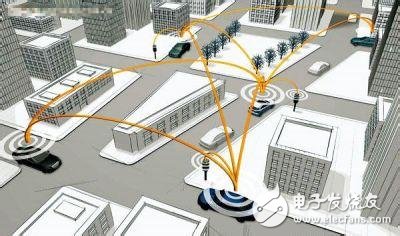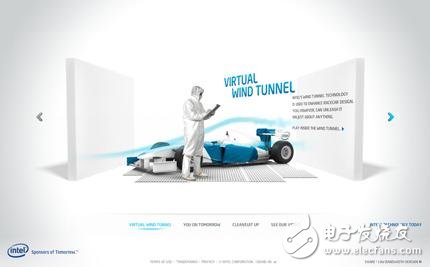As cars become more interconnected and intelligent, unmanned commercialization is getting closer, giving the opportunity to focus on chip makers in the consumer electronics arena.
Intel, Qualcomm and Nvidia have all begun to pay heavily in car networking. Not long ago, Nvidia announced that it would completely withdraw from the mobile phone market and specialize in cars. However, the three companies have different styles of play, Qualcomm focuses on graphics processing capabilities; Nvidia heavily promotes the high performance of its 192 core, while Intel has chosen a pragmatic and tactical approach.
Chip manufacturers need to go through two hurdles in the automotive industry: First, the automotive industry has more stringent industry standards than PCs or mobiles, and automakers rely on partners in the original supply chain that have been monitored for safety; The car is a complex system that emphasizes efficient coordination. It requires chip vendors to build deep connections and relationships in the industry. This is another rigorous test for their resource integration and integration capabilities.
Intel, which has come from the mobile field, has changed its past style. On the basis of American football's open innovation and free-spirited, it combines the effective marking and dead bite tactics of the German team. A battle on four wheels and a gradual evolution.

Industry pain point
At the end of 2011, Intel's "In-Vehicle Innovation and Product Development Center" opened in Karlsruhe, near Munich, Germany. Prior to this, Intel executives had privately contacted some local auto industry professionals, most of whom have 10 to 15 years of industry experience. In Europe, the senior experts in the automotive industry have been redundant in these years. Intel quickly established a research and development team of nearly 200 people, plus the strength of participating in its subsidiaries, it is estimated that there are three or four hundred people. IT companies from Silicon Valley in the United States are so high-profile in Germany that it is rare to see people. The scale and intensity of such R&D investment is rare in Intel history.
The invincibility in the PC industry has made Intel once overconfident. If this is one of the reasons that caused them to retreat in the mobile field, then now when they turn their direction and turn to the car, the first thing they need to do is to re-evaluate their hands. Card. One of the results of the revaluation is to consider the technology and products, arrange the company's investment and personnel, set up departments to meet the needs of the market, and set up a department of automotive solutions.
The bigger challenge comes from the industry. The application environment inside the car is relatively complicated, and the requirements for anti-interference, high and low temperature are very high, and there are corresponding industry standard specifications for the design and production of automobile chips. The product life cycle of the automotive industry is also different from that of consumer products. The production lead time of the car-scale chip even takes more than 10 years, which is unimaginable for traditional consumer electronics manufacturers.
"All of our quality checks are done according to the market of mobile phones. The chips of the car are put in, and the service life of 7, 8 or 10 years is guaranteed. Therefore, many places need to be improved for Intel products." Guo Xingang said. He is a Principal Engineer at the Intel Research Institute's Integrated Platform Research (IPR) Lab and has worked for about 14 or 15 years at Intel Research. At present, the team focusing on cutting-edge automotive electronics development has been stationed in the United States for a long time, complementing Germany's “In-vehicle Innovation and Product Development Center†and jointly building the two research and development bases of Intel Automotive Electronics.
At the beginning of the establishment of the German Development Center, Intel spent a lot of time communicating with the car manufacturers, car manufacturers, vendors and consumers. “A good rhythm is able to adapt to the needs of the industry, because each market has its own pulse.†Guo Xingang sees this as a process of learning from each other. “But some people think that the technology of mobile phones can be used in cars, in-vehicle information technology. It can also be quickly followed up, in fact not. In this case, the car will always lag behind. The product solution is multi-faceted, and it is necessary to fundamentally innovate the product planning system and operation method, and to maintain the technology development. Flexibility. This is a game rule in the industry."
In fact, this is a major transformation for Intel. Consumer electronics chip manufacturers have entered the automotive electronics industry's common practice, but still focus on the chip technology itself. Intel has also released similar car networking applications in the past few years, more based on chips, such as some chips based on automotive product lines. However, the more they find out in the industry, the more they discover that the Internet of Vehicles is a brand new market, and there are many hidden opportunities that have not been discovered.
"For example, product differentiation between manufacturer A and manufacturer B may be more in applications and interfaces, but in many places similar. So, can we go beyond the chip, develop the core hardware, and then the system software and part of the OS itself? "Is it done?" Xu Weijie said that he is the development director of the China market for the transportation solutions of the Intel Internet of Things Solutions and Products Division. In the process of dealing with the car factory, he found that there are many commonalities between products designed by different car manufacturers. However, no one has done this intensive, standardized underlying architecture.
Consumer electronics and automotive electronics were originally two sets of rules of the game, and opportunities were often at the intersection of differences, and new demands were discovered by Intel. Due to stability requirements and too many security restrictions, automotive product development cycles are long, and at the same time, products are becoming more and more complex, but consumers want experience requirements to be upgraded as fast as consumer electronics. If the chip is only supplied to the depot in the traditional way, the depot development takes a long time. How to shorten the development cycle as much as possible to adapt to the rapidly changing market demand is an urgent need to solve the pain points of the car factory and the entire industry.

All In One Intel I3,I3 All In One Desktop,Pc All In One Core I3,Intel Core I3 All In One
Guangdong Elieken Electronic Technology Co.,Ltd. , https://www.elieken.com